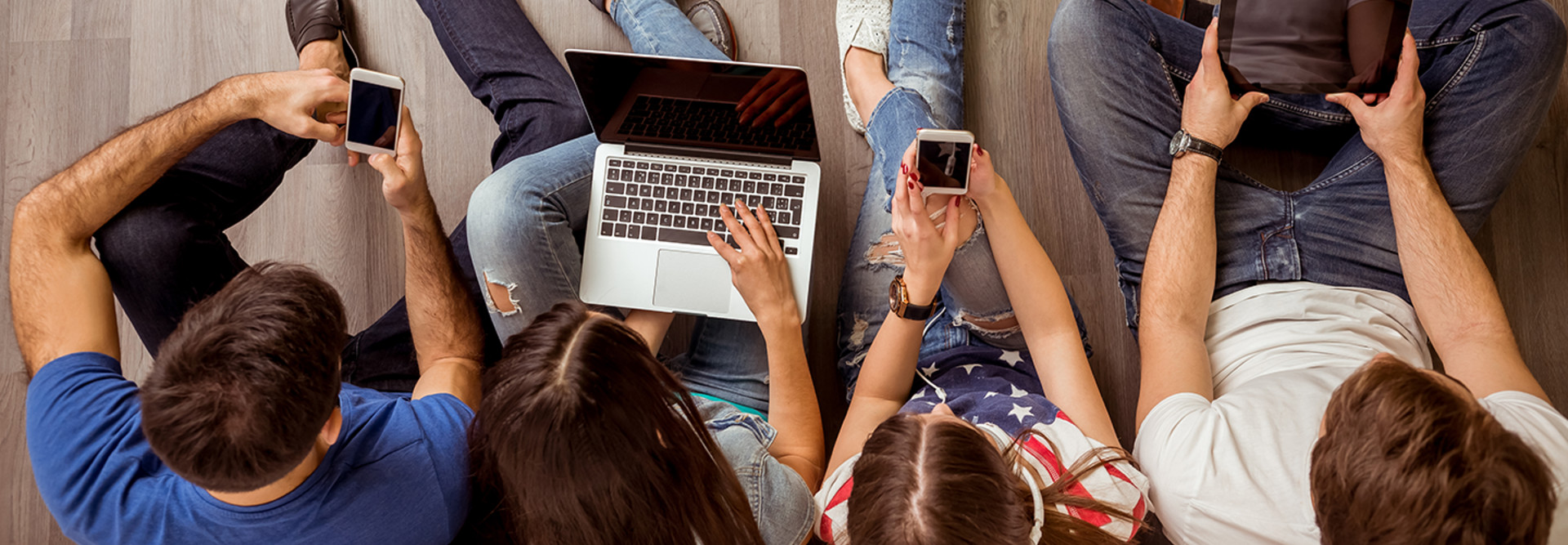How Can Beacon Technology Help Universities Boost Student Engagement?
The students and faculty members who make up a campus community expect certain levels of engagement and convenience. Universities employ a number of technology solutions that make it easier for students and faculty to take advantage of campus services.
Digital signage makes community boards more interactive and engaging, self-service kiosks reduce wait times for tasks such as picking up packages from campus mailrooms, and some institutions are now giving students Amazon Echo Dots and other smart assistants for their dorm rooms.
And now, through beacon technology, universities have a new, easy solution that relies on personal devices.
MORE FROM EDTECH: Check out how universities are using IoT technology to transform their campuses.
What Is Beacon Technology?
Beacon technology uses small, wireless sensors that use Bluetooth low energy to push notifications to mobile devices within a certain proximity using broadcast radio signals.
When a Bluetooth smart device is detected by the beacon, the device receives the beacon’s ID number. The ID number is then sent to a cloud server, where the corresponding action associated with that ID number is found.
Because of their low power needs, beacons can be placed indoors or outdoors, with applications that range from tracking crowd movements to helping students locate library books.
Universities See a Benefit of Beacon Technology in Recruitment
One successful example is unfolding now at American University, where administrators have teamed up with Sony to create a campus tour that uses augmented reality.
University IT teams installed 20 Aruba beacons at points along the tour. When prospective students open the self-guided tour application, it enables location services on their phones. Then, as students pass by the beacons, they receive notifications based on nearby landmarks.
“There was a need for location-based notification such that when our prospective students tour around campus, they are notified about where to look to see something interesting nearby, or what events were happening in that area,” says Francesco de Leo, AU’s senior director for digital transformation. “If a student were, for example, by the campus’ large eagle statue, the application would perhaps suggest taking a picture with it, because that is somewhere students usually like to take pictures.”
Beacons also help AU show prospective students the level of communication it strives to have with its community, says de Leo.
“We want to make sure that we have an engaged student population that knows of the various activities, opportunities and research that happens on campus,” he says. “Communication is a major aspect of most, if not all, universities, and we found beacon technology could help us.”
MORE FROM EDTECH: See how else universities can improve communication on campus through tech.
Enhance Campus Engagement Through Personalized Messages
AU plans to expand the program to serve current students too, de Leo says.
Administrators and IT teams are working on a beacon-aware campus app that would allow students to personalize notifications based on their interests and schedules.
“For example, if a student is walking by a building and there is a roundtable discussion or another type of event happening that is related to interests the student has indicated on the application, they can receive a notification telling them that the event is happening,” says de Leo.
This technology can also help streamline certain campus tasks. For example, de Leo and his team are interested in installing beacons on campus buses and at bus stops that will send arrival times to students’ phones.
At St. John’s University in New York, librarians are using beacons to help students find books. The associated mobile app, BKFNDr, lets students input the resources they are looking for. Students then use the app as a real-time guide that shows them the general stack they need and where they are in relation to their destination.
Originally, the team explored the use of radio frequency identification but found beacons were a superior choice for their needs and budget.
“It is more cost-effective, and deploying the beacons is much easier than RFID,” Valeda Dent, dean of St. John’s University Libraries, told Campus Technology. “If your collection moves, you don’t have to replace the beacons; you can just reprogram them from your mobile device.”
Beacon Technology Can Help Keep Campus Residents Safe
At the University of Alabama at Birmingham, researchers are testing the capabilities of beacon notifications to warn pedestrians of potential traffic danger.
The app would send an alert to the phone of anyone in the beacon’s vicinity to let them know they are nearing a dangerous intersection and encourage the recipient to cross the street safely.
“The Bluetooth beacons offer an inexpensive solution to help protect the lives of those walking around our cities,” Ragib Hasan, an associate professor in the UAB Department of Computer Science, said in a statement. “We are creating an app that the Bluetooth beacon will communicate with to alert the pedestrian of potential harm. You can think of the app as a guardian angel that looks after pedestrians even when they are otherwise distracted with their phones.”
Beacon notifications can also help universities manage campus safety during emergencies.
At Texas A&M University, IT teams deployed beacons inside and outside the engineering building. Although the technology usually helps students find their way to their classrooms, if fire were to break out, administrators could use the beacons to send mass alerts for students to evacuate immediately.
Whether for safety, convenience or efficiency, as beacon technology becomes more ubiquitous on campuses, creative uses are sure to follow.










